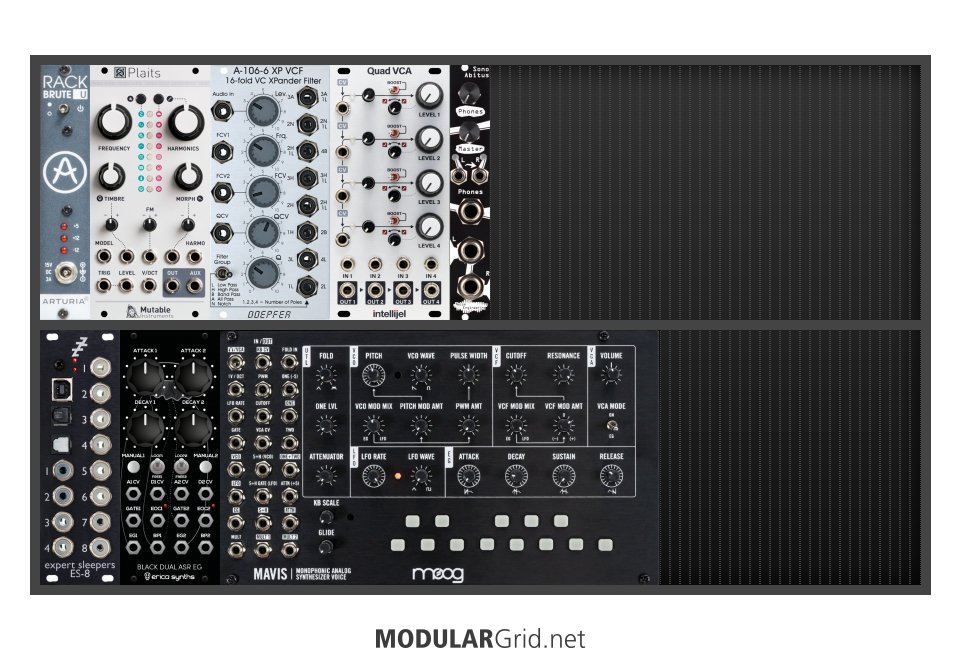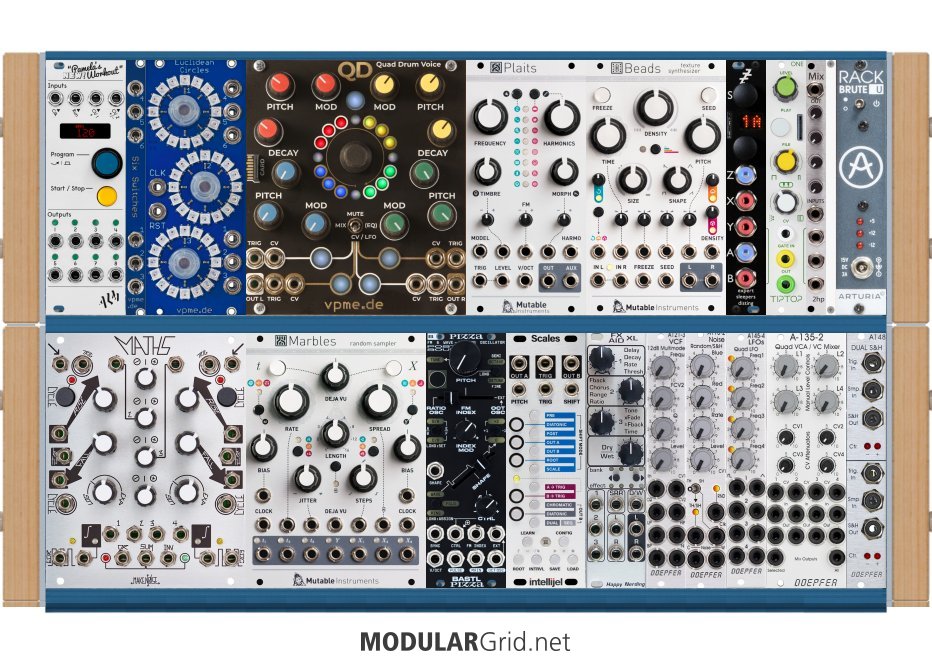any worthwhile effects rack is very, very close to a full blown modular synth...
a synth is made up of sound sources, sound modifiers, modulation sources and utility modules
an effects rack is made up of an i/o module of some sort (you sound source), sound modifiers, modulation sources and utility modules
but here's the rub... a powerful technique is audio rate modulation - for this you want a sound source - ie a vco - & the i/o is a utility - so effectively they are identical...
do you have an audio interface with at least 4 outputs? you'll want one of those if you don't have one... why do I need 4 outputs? I hear you say... because you need master outputs to hear the mix and 2 to use as sends to the rack... but I can use headphones to monitor! I hear you say - hmm, no the headphones mirror the master outs (1&2) - so unless you want to be that blind deaf and dumb kid - get at least 4 outputs!
if you want to do things like tempo syncing - you'll either want more outputs than that or a midi interface (& potentially a midi-cv module), personally I use audio as much as possible...
If you don't already have an audio interface, there are a few in eurorack (expert sleepers es8 or 9 and there's a new one on it's way from befaco)
if you already have a suitable audio interface then you'll need to boost the audio levels to modular levels - because modular operates at a much higher level (peak to peak voltage) - so you'll probably need an audio input module - or at least a module that can amplify with a decent amount of gain +20dB is good!
plugging the audio from the modular back directly into your audio interface may or may not clip, depends on the audio interface, or might want balanced inputs - so you might need either attenuators or an output module...
there are some combined i/o modules
so that's your sound source taken care of...
I'll assume you want to process stereo tracks from the DAW...
there are thousands of eurorack effects modules - so it really depends on what sort of processing you want to do - but take note a lot are mono - so that may rule them out, unless you want to buy multiples of the same module, or a LRSMSMLR module (which will take your stereo signal and turn it into Mid and Side channels - these can the be processed by mono effects and then it will recombine them back into a stereo signal) - furthermore a lot of people using DAWs want to get some 'analog goodness' into their workflow... most of these modules are mono!!! most of the 'interesting' stereo effects are digital... but don't let that put you off...
some 'interesting' effects modules that you might want to look at (in no particular order) are arbhar, clouds, beads, mimeophon, morphagene, erbe-verb, bunker archeology, magneto, starlab, rings, doepfer filters, fixed filter banks, dual looping delay, spectral multiband resonator, fsu, plague bearer - it really depends on what you are trying to do - which you didn't specify...
the real advantage of modular effects, is the level of cv modulation that you can achieve, using a combination of lfos, envelope generators, function generators, random sources and chaos... so you'll want a decent selection of those - now I hear you say "but I can twiddle knobs and use my hands" - well yes you can but you only have 2 of those - and you'll almost definitely want more, which is where these modulation sources come in very handy - as they replace your hands!!
and don't forget a vco for audio rate modulation!
now for the really important bit... utilities! mix, merge and mangle your signals - both cv and audio & probably in lots of cases not together - which is why you almost definitely need more of these than you can imagine - vcas (a good start is a good quality quad cascading vca - veils perhaps - grab one whilst you can), mixers (sub mixers, matrix mixers, unity mixers, end of channel mixers), mults, attenuators, attenuverters, switches (both manual and sequential), slews etc etc... in general these expand the capabilities of everything else you have exponentially and are comparatively inexpensive (doepfer and ladik are really good brands for these types of modules)
and you might find that a trigger/gate sequencer and a cv sequencer (possibly with multiple channels) are a good idea...
so when I say get a bigger case and go slowly with the module purchases - so you learn what you actually need - as opposed to just the effects modules you really want - you may have an inkling of why
as for a case - I'd recommend a tiptop mantis as a great starting point - it's the best meeting point of hp/cost/good quality power/manufacturer reputation...
now I hope this hasn't put you off, as modular is fantastic, but I'm just giving you an idea of what you are getting yourself into...
if you look into my signature you will see a formula - it is a rough guide to how to build a versatile modular for the least cash...
now go create a public rack (on here) throw a few modules in and post the url - so that we can critique it...
NB there is nothing unique or particularly rare or cool in modular - there are just modules - the most unique thing is you and how you combine them, patch them and play them!
"some of the best base-level info to remember can be found in Jim's sigfile" @Lugia
Utility modules are the dull polish that makes the shiny modules actually shine!!!
sound sources < sound modifiers < modulation sources < utilities




